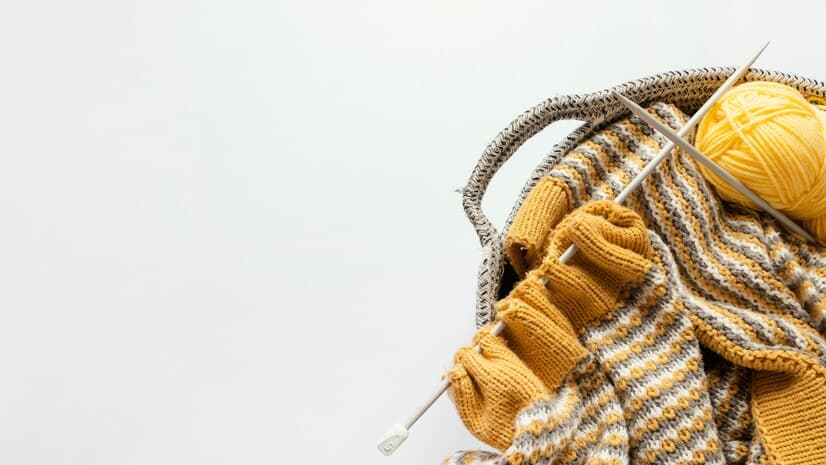Intarsia vs Fair Isle: Choosing Your Knitting Palette
Embarking on the intricate path of advanced colorwork knitting unveils a rich and vibrant tapestry of artistic expression. As you transcend the simplicity of garter stitch projects, two distinguished techniques, Intarsia and Fair Isle, stand as alluring gateways to unleash your creative vision.
Adding an extra layer of complexity, we delve into the realm of Double Knitting, enriching your knitting repertoire with its unique possibilities.
Intarsia: The Stretchy Tapestry of Color
Intarsia, achieved by intricately joining different yarns, results in a fabric that is both stretchy and drapey, allowing for an “unlimited” number of colors per row. Despite its potential, challenges such as managing bobbins and difficulties in circular knitting accompany this technique.
Fair Isle: Traditions in Stranded Knitting
Rooted in the art of stranded knitting, Fair Isle creates distinctive color patterns using two yarn strands. Efficient for abstract designs and Nordic motifs, Fair Isle does have limitations, including a maximum of three colors per row and the creation of floats on the backside.
Navigating the Intricacies of Intarsia
To navigate the intricacies of Intarsia involves knitting color blocks with bobbins and special joining methods, offering a fabric with drape and versatility. Drawbacks include managing multiple bobbins, potential tangling, and challenges in circular knitting. It suits larger designs but may not be ideal for intricate patterns.
Exploring the Advantages of Intarsia
Exploration into Intarsia unveils its potential for transforming images into knitting, allowing more than three colors per row and compatibility with various stitch patterns. The resulting fabric mimics the standard stockinette stitch drape, providing creative freedom.
Unraveling the Techniques of Fair Isle
Fair Isle, with its gentle learning curve, excels in small repeated patterns, abstract designs, and Nordic motifs. It minimizes tangling risks, offering neat finishes and enabling experimentation with color combinations.
For beginners seeking functionality, learn How to Knit Buttonholes with our step-by-step guide, unlocking a versatile skill in your knitting repertoire.
Navigating Fair Isle’s Limitations
Fair Isle’s limitations include three colors per row and small block sizes, resulting in a thicker fabric due to floats. Careful planning is required when combining Fair Isle with other single-color knitting segments.
Choosing Between Intarsia and Fair Isle
The choice between Intarsia and Fair Isle depends on the project, with Intarsia suitable for numerous colors and larger blocks, while Fair Isle excels in intricate abstract designs. Design complexity plays a role, with Intarsia allowing more than three colors per row and versatility in stitch patterns.
Evaluating Fabric Characteristics
Evaluation of fabric characteristics reveals that Intarsia creates a stretchy and drapey fabric, akin to standard stockinette stitch. Fair Isle results in a thicker fabric, better suited for specific garments. Challenges arise when knitting in the round for both techniques.
Considering Yarn Usage and Care
When considering yarn consumption and care requirements, Intarsia utilizes more yarn but offers creative freedom. Fair Isle is more conservative, demanding careful planning when combined with other techniques.
Intrigues of Double Knitting: Two-Faced Fabric Mastery
The exploration of Double Knitting adds intrigue, involving two yarns to produce a fabric with two distinct, reversible sides. The interplay of knits and purls creates a sturdy yet flexible textile, allowing captivating color combinations and intricate designs on both sides.
Advantages of Double Knitting
Double Knitting’s advantages lie in its reversible nature, accommodating contrasting color schemes or different patterns on each side. It offers excellent insulation, making it ideal for scarves and blankets.
Challenges and Considerations of Double Knitting
Despite its benefits, Double Knitting presents challenges, including managing tension and tracking two yarns. However, the effort pays off with a beautifully reversible fabric showcasing skills and creativity.
Comparing Intarsia and Fair Isle: A Brief Interlude
Before we draw the final stitches, let’s briefly compare these two techniques. Intarsia shines when your canvas demands numerous colors and expansive blocks, ideal for transforming intricate images into knitting. On the other hand, Fair Isle excels in intricate abstract designs, providing a polished finish on the right side, though with limitations on color count and block size.
Conclusion
In the tapestry of advanced colorwork knitting, the choice between Intarsia and Fair Isle is akin to selecting the palette for your artistic masterpiece. Intarsia unfolds a canvas for vibrant, intricate designs, while Fair Isle narrates a story of tradition and efficiency.
Each technique possesses its distinctive allure, and as you navigate this colorful journey, embracing both allows you to weave a tapestry that truly reflects your artistic flair.
